|
|
|
|
 Print Print
|
|
|
| Portable Charger. |
Page 1 | 2 | 3 |
 Back to Page 1. Back to Page 1.
Electrical.
The alternator was from a Datsun and had a built in regulator, making the wiring a lot easier. The back of the alternator has a Positive terminal, a Negative terminal ( ground, chassis, earth ), and a IND terminal.
The IND is short for Indicator, the little light bulb in your car dash that lights up when your ignition is on but the motor isn't running. If it lights up while your driving, chances are you've thrown a fan belt. On most alternators with internal regulators ( mine included ), the alternator needs the Indicator bulb or it wont work. I've put a switch in series with the indicator bulb to make starting the motor easier, its a lot easier to pull start a motor when the alternator isn't loading it down. I've also added a amp meter.
|
|
To measure amps, I'm using the positive power lead as a shunt resistor. There is about 1m of lead between the alternator and control box, and this is enough length to act as a shunt resistor. The 10k trim pot is used to calibrate the amp meter scale, and to do this I connected a 12v battery across the alternator pos and neg terminals ( right way around, or it would have blown the alternator rectifier ), and connected a couple of 100watt spotlights to the alligator clips. This drew 16 amps and I adjusted the scale to suit. The motor wasn't running of course.

|
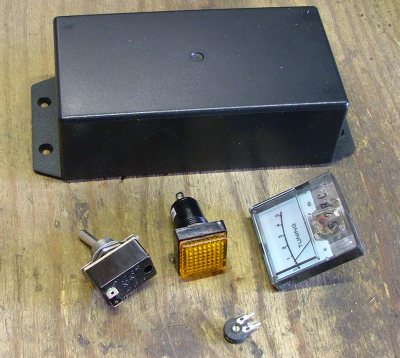
The parts for my "Control Box". Meter was from an old stereo, the rest I bought. The meter has a scale 0 to 5, and I'll use this to read 0 to 50 amps, so I don't need to draw up a new scale for the meter face. |
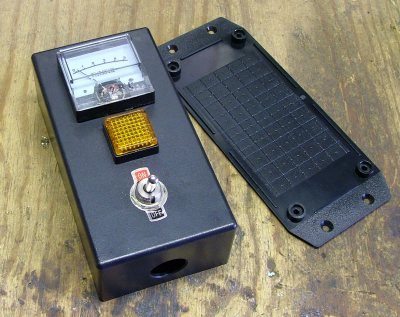
All the bits mounted. |
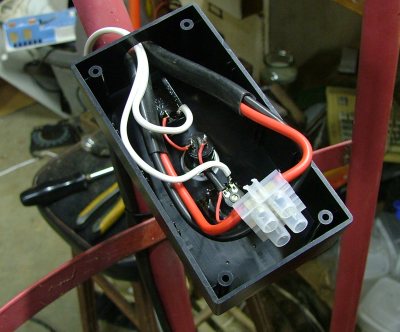
And wired up. Its a simple circuit so I used a rats nest technique. Not pretty, but no one will ever know!?? |
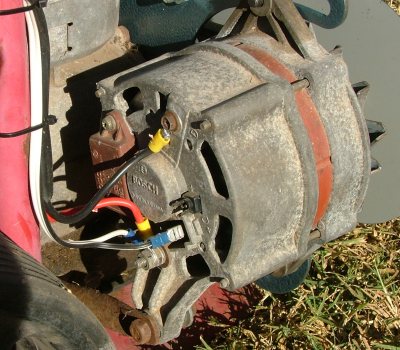
The connections at the back of the alternator. |
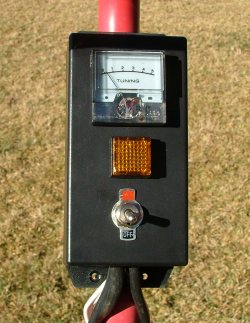 Finished control box mounted on handle bars. Finished control box mounted on handle bars.
To start my portable charger, I switch the Indicator light on, and connect the alligator clips across the battery I want to charge. When the indicator light is lit, I know I've got a connection.
Then I switch the indicator off, and pull start the engine. Once the motor has settled down after a few seconds, I switch the indicator switch back on and this will tell the alternator to start charging. The amp meter then jumps up to indicate the charging current.
I find the portable charger only needs to run for 5 minutes and the battery has enough charge to crank an engine
NEVER take the alligator clips off the battery while the motor is running. It can damage the alternators regulator and could also give you a nasty shock. Always shut down the motor first. |
Next Page - some more home made chargers.  |
|
|
|
© TheBackShed 2011
|






 Finished control box mounted on handle bars.
Finished control box mounted on handle bars.